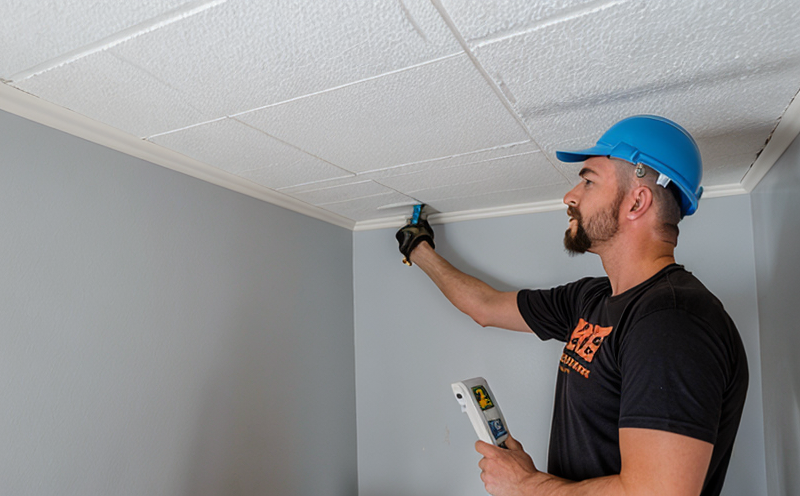Drywall installation inspection
When it comes to construction and building projects, especially in the realm of interior finishing, drywall installation is a critical phase. This process involves several steps, including cutting, setting up, fixing, and finishing the sheets that are used to form walls and ceilings within buildings. Properly installing drywall contributes significantly to the structural integrity, acoustics, thermal insulation, fire resistance, and aesthetic appeal of a structure.
The inspection phase is integral as it ensures that all installations meet local building codes and standards. For instance, in North America, this might involve adherence to ASTM C 1316-20 Standard Practice for Installation of Gypsum Board on Wood Stud Walls. The objective here is not just about aesthetics but also about ensuring the longevity and performance of buildings.
Drywall installation inspection typically involves a series of checks. These include verifying that the materials used are appropriate, checking the level and alignment of installed sheets, examining the adhesion between sheets and fasteners, and inspecting the finishing processes to ensure they meet quality standards. This ensures not only compliance with regulations but also enhances durability and safety.
For instance, in commercial construction projects, drywall inspection is crucial for maintaining compliance with fire codes which demand certain levels of fire resistance. Similarly, in residential settings, it's important to check that the materials used are suitable for moisture conditions and insulation requirements.
The stakes involved can be high. Poor installation practices can lead to issues like structural weaknesses, reduced soundproofing effectiveness, inadequate thermal insulation, and even potential health hazards due to improper handling of materials. Therefore, a thorough inspection process is essential to mitigate these risks and ensure the best possible outcomes for both the construction company and end-users.
Understanding the context of drywall installation within the broader scope of building inspections highlights its importance in ensuring that every aspect of a project contributes to creating a safe, functional, and aesthetically pleasing environment. This knowledge is vital for quality managers, compliance officers, R&D engineers, and procurement teams who need to ensure that all aspects of construction meet not only regulatory requirements but also the highest standards of performance.
Industry Applications
| Application | Description |
|---|---|
| Commercial Construction | Drywall installation inspection is essential for ensuring compliance with fire codes and other regulations, contributing to the overall safety and integrity of commercial buildings. |
| Residential Construction | Achieving compliance with building codes related to moisture resistance and insulation standards ensures long-term performance and comfort in residential structures. |
| New Construction Projects | Ensures all installations meet the specified quality levels, enhancing durability and safety of new constructions. |
| Retrofitting Existing Buildings | Guarantees that any modifications comply with current codes, maintaining or improving structural integrity and performance. |
| Renovation Projects | Ensures that the renovation work is up to code, maintaining aesthetic appeal while ensuring safety and functionality. |
- New Construction: Ensuring all materials meet quality standards from the beginning enhances overall project success.
- Retrofitting: It's vital for meeting current codes without compromising on aesthetics or functionality.
Quality and Reliability Assurance
- Material Inspection: Ensuring the drywall sheets are of high quality, free from defects, and suitable for the intended use.
- Installation Process: Regular checks during installation to ensure proper alignment, adhesion, and overall stability.
- Alignment: Using laser levels or other precision tools to maintain straight lines and angles.
- Adhesion: Ensuring that the drywall sheets are securely attached using appropriate fasteners and compounds.
The inspection process also includes evaluating the quality of finishing work, such as sanding and painting. This step is critical for achieving a smooth, even surface which enhances both appearance and functionality. Properly installed and inspected drywall contributes significantly to creating an environment that is safe, comfortable, and visually appealing.
Competitive Advantage and Market Impact
Drywall installation inspection plays a pivotal role in establishing a company's reputation for excellence in the construction industry. By adhering strictly to quality standards and ensuring all installations are up to code, companies can differentiate themselves from competitors who may cut corners on inspections.
Companies that prioritize thorough drywall installation inspections not only meet regulatory requirements but also enhance their standing among clients and stakeholders. This commitment to quality translates into higher levels of customer satisfaction, which is a key driver in building long-term relationships and fostering repeat business.
Furthermore, by ensuring compliance with the latest codes and standards, these companies stay ahead of market trends, positioning themselves as leaders in innovation within the construction sector. This proactive approach not only protects against potential legal issues but also contributes to sustainable practices that benefit both the environment and society at large.





